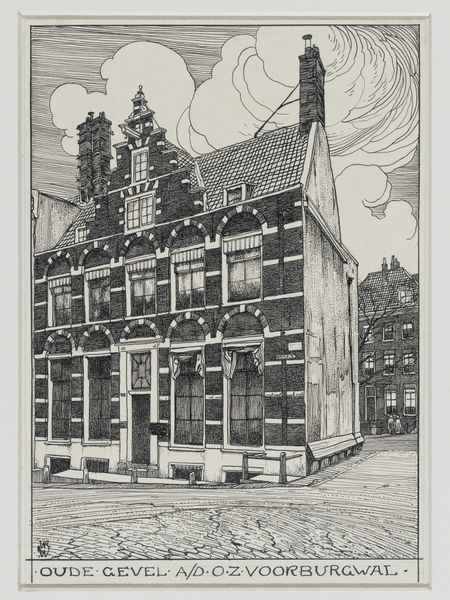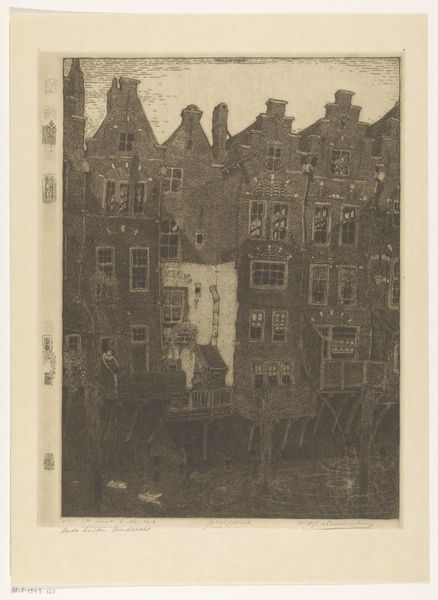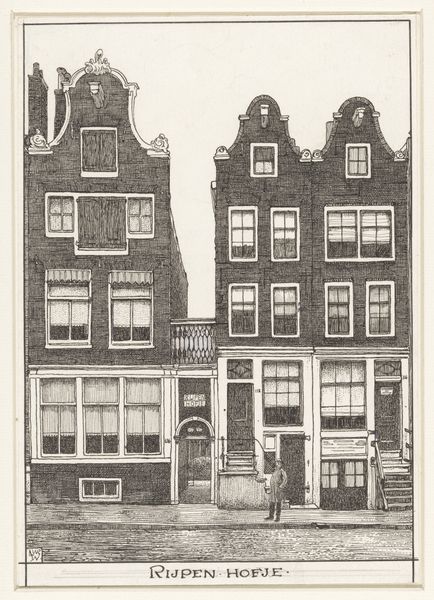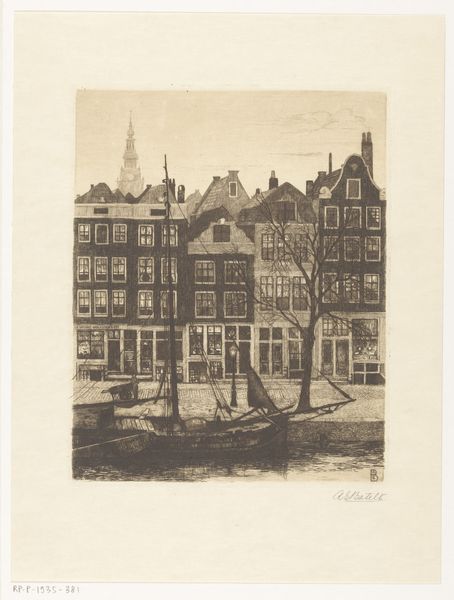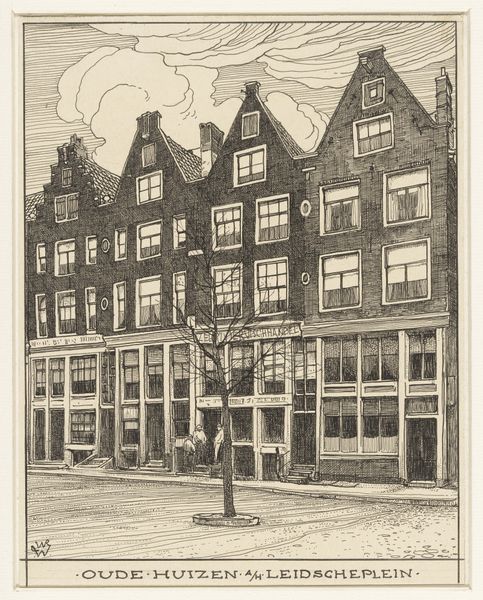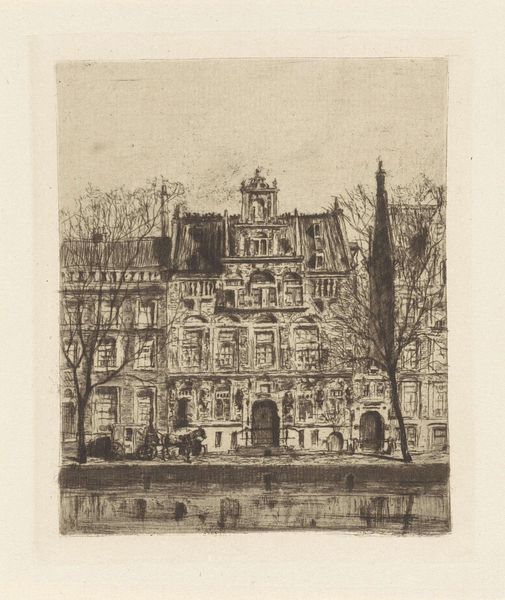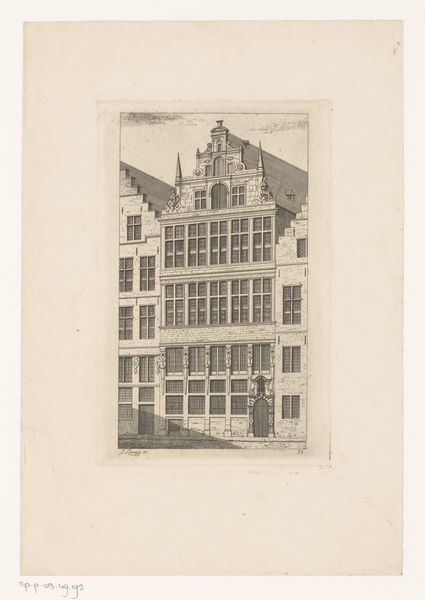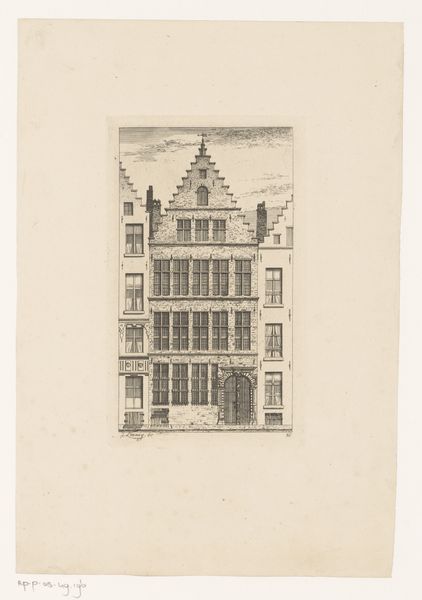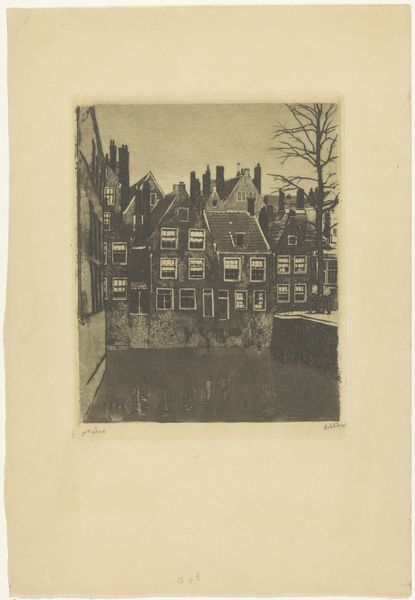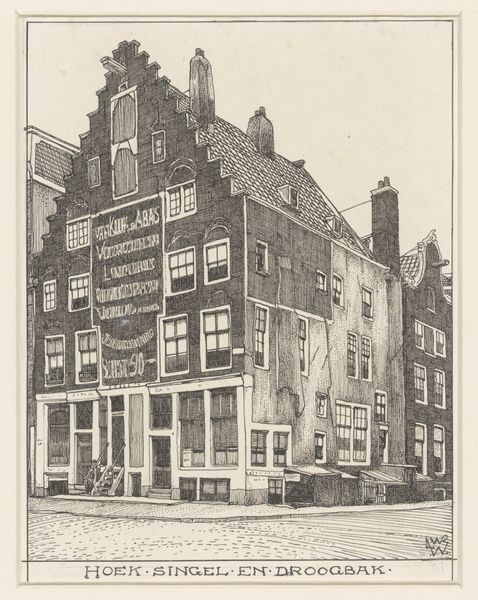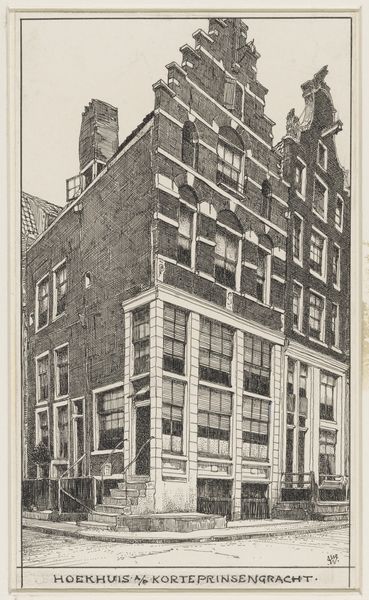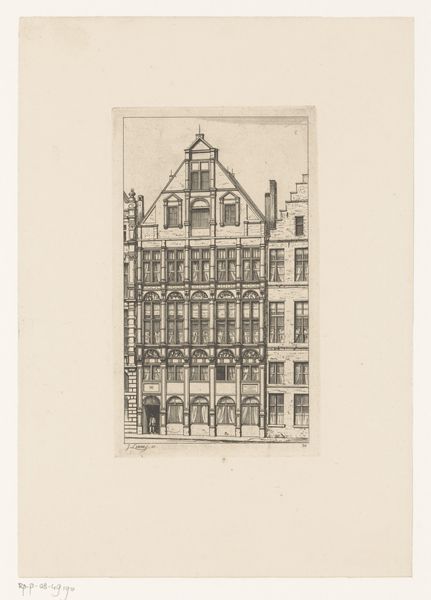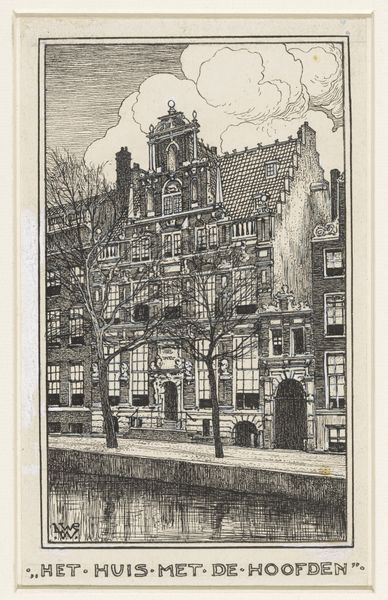
drawing, print, etching, ink
#
drawing
#
dutch-golden-age
# print
#
etching
#
ink
#
pen-ink sketch
#
cityscape
#
street
#
realism
Dimensions: height 204 mm, width 129 mm
Copyright: Rijks Museum: Open Domain
Willem Wenckebach made this etching of the Groenlandsche Pakhuizen in Amsterdam using metal plate and acid. An etching is made by first covering a metal plate with a waxy, acid-resistant coating. The artist then scratches an image into the coating, exposing the metal. The plate is then dipped in acid, which bites into the exposed lines, creating grooves. Ink is applied to the plate, filling these grooves, and the surface is wiped clean. Finally, paper is pressed against the plate, transferring the ink to create the print. The meticulous labor involved in creating this etching mirrors the history of the warehouses depicted. Built to store goods from Greenland, these buildings represent Amsterdam's prominent role in global trade and consumption. Etchings like this one provided an important means of circulating images of commerce and wealth at the turn of the century. By understanding the materials, making, and context, we can better understand the full meaning of an artwork, challenging traditional distinctions between fine art and craft.
Comments
No comments
Be the first to comment and join the conversation on the ultimate creative platform.
